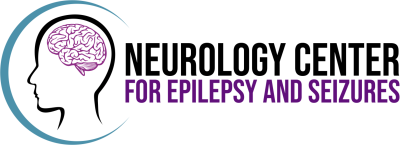Is your child struggling in school despite additional support or interventions? Academic challenges can sometimes…

Essential Tremor: Diagnosis & Treatment Options
Essential tremor (ET) is a neurological disorder characterized by involuntary shaking, typically affecting the hands, arms, head, and voice. It is one of the most common movement disorders and can manifest at any age, though it often becomes more pronounced in older adults. The primary symptoms include rhythmic trembling during voluntary movements, which can significantly impact daily activities such as eating, writing, and using tools.
Individuals with essential tremor often experience frustration and embarrassment due to the uncontrollable shaking, leading to challenges in social interactions and activities that require fine motor skills. As the condition progresses, the tremors may worsen, further hindering one’s ability to perform routine tasks independently.
Diagnosis usually involves a medical history review and neurological examination, while treatment options may include lifestyle changes, physical therapy, and medication to help manage symptoms. In more severe cases, surgical interventions like deep brain stimulation may be considered to alleviate the tremors. Overall, understanding and addressing essential tremor can provide affected individuals with strategies to improve their quality of life.
Essential Tremor Diagnosis
The diagnosis of essential tremor primarily relies on a thorough clinical examination and an assessment of family history. A family history of tremor is significant, as essential tremor often has a genetic component. During the clinical examination, the physician evaluates the tremor’s characteristics, including its frequency and the circumstances under which it occurs.
While laboratory and imaging studies are generally unnecessary for typical cases, they may be warranted in atypical scenarios. Differential diagnoses to consider include Parkinson’s disease, dystonia, drug-induced tremors, and hyperthyroidism. A standard electrolyte panel can help exclude metabolic causes, while MRI may be used to rule out structural brain lesions or other neurological conditions in atyplical cases.
Ultimately, a comprehensive evaluation focusing on the patient’s clinical presentation and family history is crucial in diagnosing essential tremor and differentiating it from other potential disorders.
Essential Tremor Treatment
Essential tremor remains a challenging condition, with limited advancements in oral drug treatments over the past two decades. First-line oral therapies, such as beta-blockers (e.g., propranolol) and anticonvulsants (e.g., primidone), have maintained their status, but patient responses vary significantly. Many patients experience partial relief or intolerable side effects, underscoring the need for alternative approaches.
In addition to drug treatment, physical and occupational therapy can play a crucial role in managing symptoms. Physical therapy focuses on enhancing strength and coordination, while occupational therapy addresses adaptive strategies to improve daily functioning. Techniques such as weighted utensils and specialized equipment can help patients better manage their tremors in routine tasks.
For those inadequately responding to monotherapy, considering polytherapy may offer additional benefits. Combining medications can target different mechanisms of action and potentially enhance overall tremor control. This multifaceted approach may lead to improved quality of life for individuals with essential tremor, highlighting the need for personalized treatment strategies.
Essential Tremor Versus Parkinson’s Disease
Essential tremor and Parkinson’s disease are both movement disorders but differ significantly in their characteristics. Essential tremor primarily manifests as an action tremor, occurring during voluntary movements such as writing or drinking. In contrast, Parkinson’s disease is marked by a resting tremor, which appears when the affected person is at rest and often subsides with movement.
The specific body parts affected also vary; essential tremor typically impacts the hands, head, and voice, while Parkinson’s disease can involve the hands, legs, and jaw, leading to bradykinesia (slowed movement) and stiffness as well.
Neurological symptoms associated with essential tremor are generally limited to the tremor itself, whereas Parkinson’s disease includes a broader range of symptoms, such as rigidity, balance issues, and cognitive changes.
Essential tremor often manifests in middle age or later and may have genetic links, with familial patterns observed. Conversely, Parkinson’s disease generally has an onset in older adults, primarily over 60, with some genetic mutations identified but less heritable compared to essential tremor.



